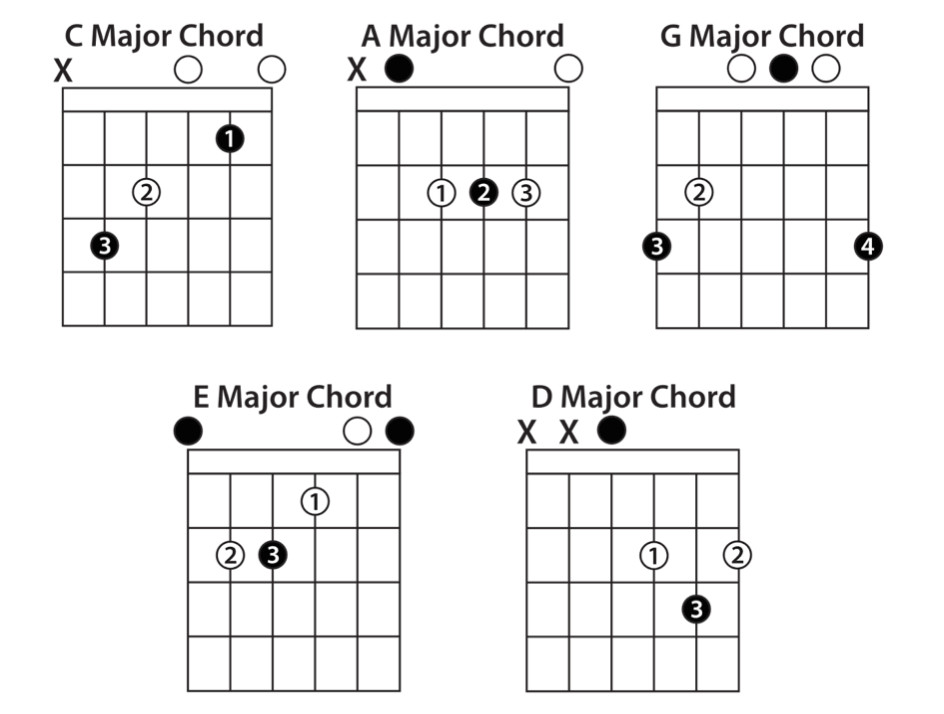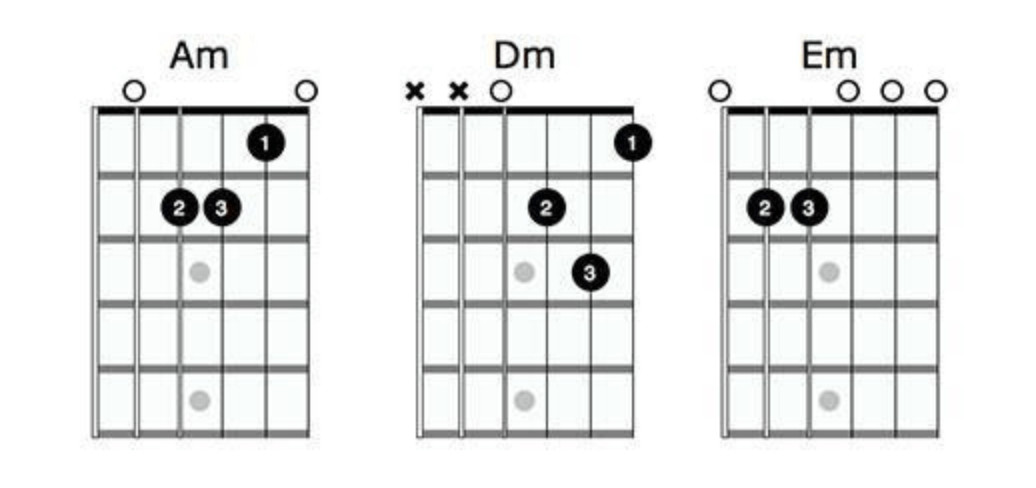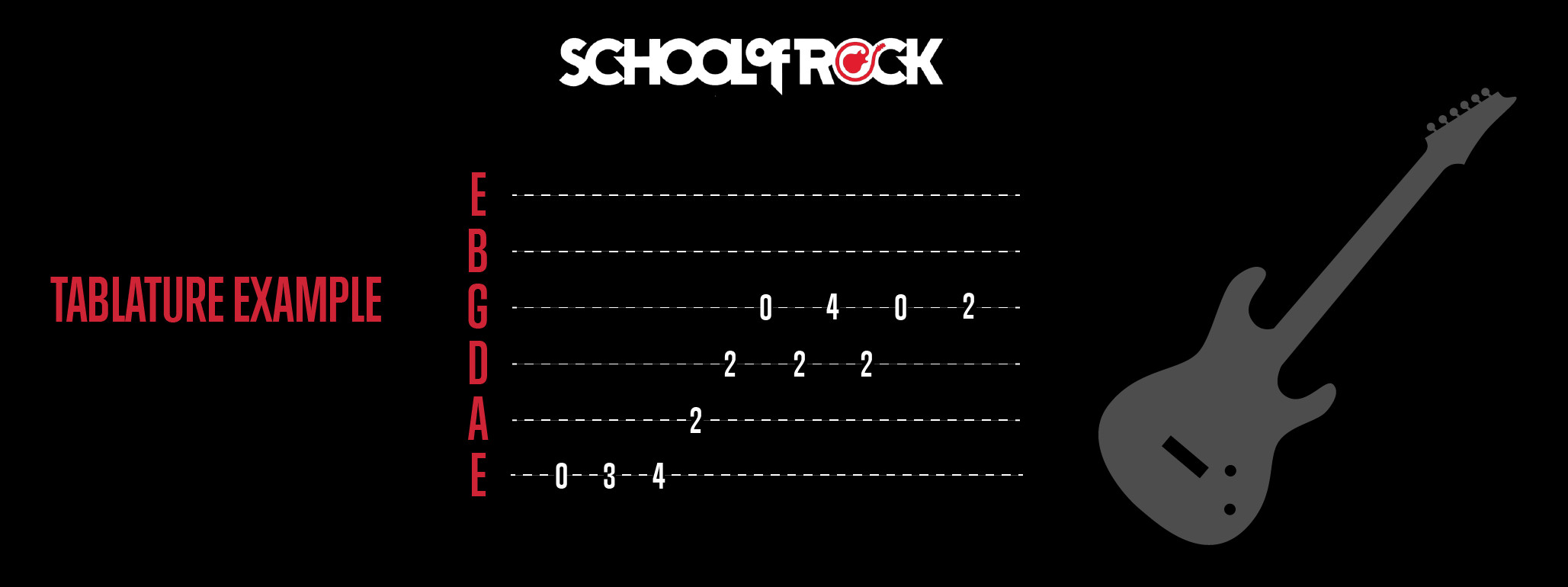Picking up a guitar for the first time is exciting. You’re ready to make music, but where do you even begin? Learning guitar chords is one of the essential first steps for any aspiring guitarist. Chords are the foundation of harmony in music, providing rhythm and depth. They are played by most instruments, forming the backbone of countless songs across genres. Let’s dive into the world of Guitar Chords For Beginners, explore different types, learn how to play them effectively, and discover some easy songs to get you started.
The School of Rock method emphasizes hands-on learning and performance. Students quickly apply what they learn in lessons to playing with others and even performing live. Whether you dream of being a lead guitarist shredding solos or a rhythm guitarist laying down the groove, understanding chords is crucial. Rhythm guitarists focus on chords and strumming or fingerpicking techniques, while lead guitarists emphasize melody and riffs. Both roles rely heavily on a solid chord vocabulary. If you’re just starting out and need a guitar, check out this helpful guitar-buying guide for tips on choosing your first instrument.
Understanding Basic Guitar Chords
Learning guitar chords can seem daunting at first. There are many types of chords and different ways to play them. However, beginners usually start with three main categories: power chords, open chords, and barre chords. Let’s explore each of these to understand their characteristics and how they are used.
Power Chords
Power chords are often among the first chords taught at School of Rock due to their simplicity and widespread use. They are a staple in rock, metal, punk, and even modern pop music. Power chords are considered beginner-friendly because they typically involve only two or three strings and fewer frets, making them easier on your fingers. While playable on any guitar, they are particularly popular on electric guitars. When played on an electric guitar with distortion, power chords create a powerful, driving sound that is perfect for rock genres. They are excellent for creating a strong rhythmic foundation and adding energy to music.
Open Chords
Open chords are another excellent starting point for beginners. The term “open” refers to the fact that these chords incorporate one or more open strings (strings played without fretting with the left hand). Like power chords, open chords often involve fewer frets and are relatively easy to play. However, unlike power chords, open chords typically use all six strings of the guitar, creating a fuller, richer sound. The most common set of open chords is often referred to as CAGED chords, an acronym derived from the root notes of five common open chord shapes: C, A, G, E, and D. We will look at these essential open chords and how to play them shortly.
Barre Chords
Barre chords introduce a different technique and are generally considered more challenging for beginners initially, but they are incredibly versatile and essential for progressing on the guitar. The key characteristic of barre chords is using one finger to “barre” or press down multiple strings at the same fret. Once you master the shape of a barre chord, you can move it up and down the guitar neck to create different chords without changing the finger shape significantly. This mobility makes them very useful for playing in different keys and transitioning between chords smoothly. However, barre chords require more finger strength and accurate finger placement, which can be difficult for beginners. We will focus on open and power chords for now and explore barre chords as you advance.
Mastering Open Guitar Chords
Before learning specific open chords, it’s crucial to ensure your guitar is properly tuned. Playing in tune will make your practice sessions much more enjoyable and effective. If you’re unsure how to tune your guitar, this article provides helpful guidance: Beginner’s Guide to Tuning a Guitar.
Once your guitar is tuned, let’s explore the CAGED open chords and other essential beginner-friendly chords. CAGED chords are fundamental in the School of Rock performance-based curriculum because these chords are used in a vast number of popular songs that students learn and perform. Each letter in CAGED represents a major open chord. The diagrams below illustrate how to play these chords.
Understanding Chord Diagrams
Chord diagrams are visual representations of the guitar fretboard that show you exactly how to play a chord. They are read horizontally, with the leftmost vertical line representing the thickest string (low E string) and the rightmost line representing the thinnest string (high E string). Imagine holding your guitar upright in front of you – that’s the perspective of the chord diagram.
- ‘X’ above a string: Indicates a muted string, meaning you should not play that string.
- ‘O’ above a string: Indicates an open string, meaning you play that string without pressing down any frets.
- Numbers within the diagram: Represent which finger to use to fret a string: 1 = index finger, 2 = middle finger, 3 = ring finger, and 4 = pinky finger.
- Horizontal lines across the diagram: Indicate frets. The top horizontal line is the guitar nut (the start of the fretboard), and the subsequent lines represent frets further down the neck. If numbers are shown to the left of the diagram, they indicate the fret number where the chord shape begins (e.g., ‘2’ would mean the chord starts at the 2nd fret). If no numbers are present, the chord starts at the nut (open position).
For example, in the A Major chord diagram below, you’ll see that the index finger (1) is placed on the 2nd fret of the D string, the middle finger (2) on the 2nd fret of the G string, and the ring finger (3) on the 2nd fret of the B string. The E, A, and high E strings are played openly (O), while the low E string is muted (X).
 Open Guitar Chords for Beginners
Open Guitar Chords for Beginners
Let’s look at some common open chords and their diagrams:
C Major:
 C Major Chord Diagram
C Major Chord Diagram
A Major:
(Diagram image is the same as above – using it again as per instructions)
 C Major Chord Diagram
C Major Chord Diagram
G Major:
(Diagram image is the same as above – using it again as per instructions)
 C Major Chord Diagram
C Major Chord Diagram
E Major:
(Diagram image is the same as above – using it again as per instructions)
 C Major Chord Diagram
C Major Chord Diagram
D Major:
(Diagram image is the same as above – using it again as per instructions)
 C Major Chord Diagram
C Major Chord Diagram
E minor (Em):
 E minor Chord Diagram
E minor Chord Diagram
D minor (Dm):
(Diagram image is the same as above – using it again as per instructions)
 E minor Chord Diagram
E minor Chord Diagram
A minor (Am):
(Diagram image is the same as above – using it again as per instructions)
 E minor Chord Diagram
E minor Chord Diagram
It’s important not to confuse chord diagrams with tablature (TAB). While both are used for guitar, they represent different information. Tablature is a way to represent musical notes and their position on the fretboard. In tablature, horizontal lines represent the guitar strings, but they are read vertically, with the bottom line being the low E string and the top line being the high E string. Numbers on the lines indicate the fret to be played on that string. ‘0’ represents an open string.
 Guitar Tablature Example
Guitar Tablature Example
Chord diagrams are specifically designed to show you how to form chords, including finger placement. They are incredibly helpful for visualizing chords and learning the correct finger positions for smooth transitions. With practice, these chord shapes will become muscle memory, and you’ll be able to play them without constantly referring to diagrams.
Essential Tips for Playing Chords
As you learn these and other guitar chords, keep these practice tips in mind:
-
Position Fingers Close to the Fret: Frets are separated by thin metal bars. Place your fingers just behind these bars (towards the soundhole of the guitar, not directly on top of or too far behind them). This requires less pressure to produce a clear sound and reduces buzzing. Experiment to find the sweet spot.
-
Use Your Fingertips and Arch Your Fingers: Press down on the strings with the very tip of your fingers. Keep your fingers arched, like the shape of a ‘C’. This ensures you are pressing down cleanly on the intended string and avoid accidentally muting adjacent strings. Arching your fingers is crucial for clear sound and smooth transitions.
-
Play Each String Individually: After forming a chord, strum each string separately, starting from the lowest string to the highest. Listen carefully to each note. If any string sounds muffled or buzzy, adjust your finger position slightly until each note rings out clearly. This helps identify which finger might be causing a problem and allows you to correct your technique.
-
Practice Fretting and Unfretting: Practice switching between chords smoothly. Start by forming a chord, strumming it, then lifting your fingers off, and then quickly reforming the chord. Repeat this process, gradually increasing your speed. You can also hover your fingers just above the fretboard in the correct chord shape while unfretting, so your hand remembers the shape and is ready to quickly form the chord again. This develops muscle memory and improves chord transitions.
Popular Songs Using Beginner Guitar Chords
Now that you have learned some basic guitar chords and practice techniques, let’s explore some popular songs you can play using these chords. Learning songs is a fun and motivating way to apply your chord knowledge. Here are some songs that are great for beginners and utilize the CAGED chords and some minor chords we discussed:
-
“Sweet Home Alabama” by Lynyrd Skynyrd: A classic rock anthem using just three chords: C, G, and D. This song is excellent for practicing basic chord changes and strumming in a popular song context.
-
“Bad Moon Rising” by Creedence Clearwater Revival: Another three-chord wonder in the key of D, using G, D, and A. Its upbeat tempo and simple chord progression make it very accessible for beginners.
-
“Love Me Do” by The Beatles: A foundational Beatles hit in the key of G, using G, C, and D. This song is perfect for practicing smooth transitions between these essential open chords and getting a feel for classic songwriting.
-
“Eleanor Rigby” by The Beatles: In the key of Em, this song primarily uses C and variations of Em. It’s a bit more melancholic and allows you to practice the Em chord and chord changes in a different musical context.
-
“Time of Your Life” by Green Day: Originally in the key of G, this song uses G, C, Cadd9, and D5 power chords. However, for beginners, you can easily substitute the D5 power chord with a regular D major chord, and it will sound very similar and still capture the essence of the song.
-
“Island in the Sun” by Weezer: This catchy tune uses four chords throughout: Em, Am, D, and G. The bridge section incorporates power chords, making it a great song to bridge the gap between open chords and power chords as you progress.
-
“Boulevard of Broken Dreams” by Green Day: In the key of Fm, this song uses Em, G, D, and A. Similar to “Island in the Sun,” it also uses power chords towards the end, providing another opportunity to practice both open and power chords within one song.
More Great Songs for Beginner Guitarists:
- “Hey There Delilah” by Plain White T’s
- “Hallelujah” by Leonard Cohen
- “Redemption Song” by Bob Marley
- “Knockin’ on Heaven’s Door” by Bob Dylan
- “Let It Be” by The Beatles
- “Stand By Me” by Ben E. King
Exploring Power Chords Further
Power chords, while simpler than open chords, are closely related to barre chords and offer a stepping stone to understanding more complex chord structures. Let’s delve deeper into power chords and their characteristics.
Compared to open chords, power chords have fewer notes, typically consisting of only two or three notes. This means they often involve fewer fingers and are easier to fret. However, the underlying chord shapes can be similar. Consider an A major chord and an A5 power chord as an example. An A major chord contains the notes A, C#, and E. An A5 power chord contains only A and E. The A major chord includes the root (A), the third (C#), and the fifth (E), while the A5 power chord focuses on the root (A), the fifth (E), and the octave (A again, the same note as the root). Essentially, the power chord is a simplified version, omitting the third.
A crucial characteristic of power chords is that they are neither major nor minor. The third of a chord determines whether it is major or minor. Since power chords lack the third, they can be used in place of either major or minor chords, making them incredibly versatile in many musical contexts. Experiment by playing both an open chord and its corresponding power chord and listen for the difference in sound and feel.
Power chords also share similarities with barre chords in terms of technique. Three-string power chords can be played using a barre-like technique, where one finger “barres” across two strings at the same fret. This “finger barre” technique is a great way to start developing the finger strength and dexterity needed for full barre chords, gradually working towards barring all six strings.
Power chords are prevalent in various genres, especially classic rock and contemporary pop music. In School of Rock’s Rock 101 program, beginner guitarists learn power chords as a foundation for playing rock music. Here are some songs that effectively utilize power chords and are excellent for practice:
-
“Wild Thing” by The Troggs: A garage rock classic that heavily features A5, D5, and E5 power chords, with occasional G5 power chords. This song is perfect for practicing basic power chord shapes and transitions in a raw, energetic context.
-
“Let It Be” by The Beatles: While often played with open chords (C, G, Am, F), “Let It Be” can also be played effectively using power chords. You can substitute C5, G5, and F5 power chords for their open chord counterparts (C, G, and F) to create a rock-oriented version of this classic, demonstrating the versatility of power chords.
-
“Rock and Roll” by Led Zeppelin: An iconic rock anthem built upon A5, D5, and E5 power chords. This song is excellent for practicing power chords in a high-energy, classic rock setting and developing a strong rhythmic feel.
-
“I Love Rock and Roll” by Joan Jett: A definitive rock and roll track driven by E5, A5, and B5 power chords. This song is fantastic for practicing power chord progressions and developing a confident, driving rhythm guitar style.
-
“When I Come Around” by Green Day: This entire song is built on power chords: F#5, C#5, D#5, and B5. It’s a great example of how power chords can create melodic and harmonic interest in a song, even without traditional major or minor chords.
-
“Rockin’ In the Free World” by Neil Young: This song starts with power chords and then transitions into a mix of open and power chords. It uses E5, D5, and C5 power chords, which then correspond to Em, D, and C open chords in other sections of the song, demonstrating how power chords and open chords can complement each other within a song.
 Other commonly used beginner guitar chords.
Other commonly used beginner guitar chords.
Taking Your Guitar Journey Further
Now that you’ve explored guitar chords for beginners and learned some songs to practice, are you ready to take your guitar playing to the next level? Do you need some guidance and structured learning? School of Rock is here to help! We offer private music lessons and comprehensive music programs designed to set you on the right path. Programs like Rock 101 and the Performance program are specifically designed to help beginners and intermediate players apply their private lesson knowledge to playing full songs and performing as part of a band.
Through these programs and lessons, students not only develop their musical talents but also learn valuable life skills like teamwork, discipline, and confidence through the power of music education. Many of the songs mentioned in this article are incorporated into these programs, helping students master open guitar chords, power chords, and fundamental music theory in a fun, engaging, and performance-oriented environment. If you’re interested in learning more and taking your guitar playing to new heights, contact your nearest School of Rock location to discover the perfect program for you.
About the Author:
Miranda Morales is a guitar and keyboard instructor at School of Rock Easton in Pennsylvania.
